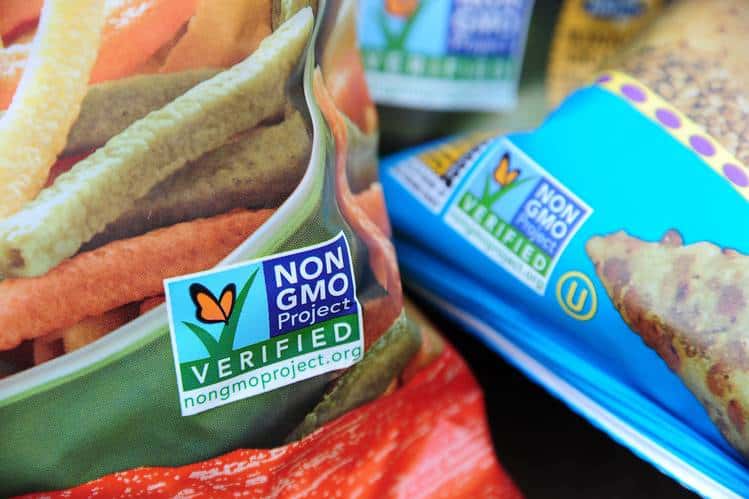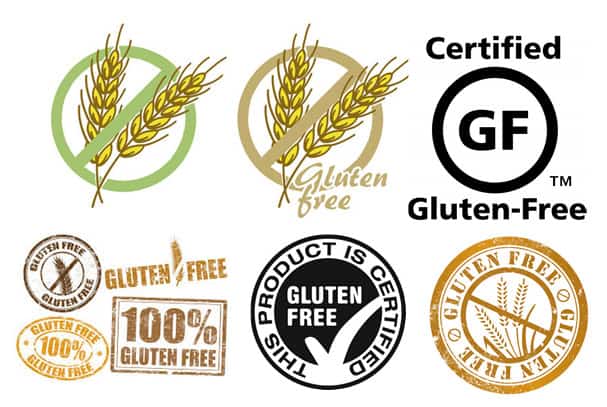The Dangers of GMOs
By Dr. Dina Elsalamony MD, MScPH
Genetically modified organisms (GMOs) is a term applied to any altered crops, animals or micro-organisms. They have engineered GMOs to make them less susceptible to disease, insects or vulnerable to weather changes. Similar to any new food technology, the safety of genetically modified foods
in terms of the human health and the environment has become a contentious topic surrounded by uncertainty among both scientists and food regulators around the world.
In this article we will dive deep into this topic, explaining exactly what are GMOs, their advantages and risks, and why each country may have a different stance on them!

What are GMOs?
Genetically modifying organisms or foods involves using the recombinant DNA technology to deliberately modify the genetic material (DNA) of the animal or plant, in a way that does not occur naturally. (1) Biotechnology has become a significant part of the global market. Plus, GMOs are being considered as one of the most important advances in modern agriculture. They also offer valuable economic and social benefits to many countries around the world. GMOs have been available since the 90s, with over 200 crops that are approved for human and animal consumption worldwide (2).
However, GMOs remain a source of controversy and division around the world. For example, in the USA and many countries in Asia, they have grown and consumed GM foods for many years. They are very common across the US since they use GMO seeds in over 90% of all soy, cotton and maize grown in the US according to the Department of Agriculture (USDA), (3) which means most of the food you consume from the US supermarkets contain a GMO, either directly through eating plants or indirectly through eating processed foods, or animals fed on GMOs.
Despite the concerns raised by many foods safety and environmental groups regarding growing and consuming GMOs, both the Environmental Protection Agency (EPA), and the Food and Drug Administration (FDA) have maintained that GMOs are safe for humans, animals and the environment. As of now, there is no regulation mandating the labelling of GMO foods. However, this is possibly due to change in 2022 (4).
The story is different in Europe. Recently, 19 out of the 27 EU countries voted to either fully or partially ban GMOs, with currently only two countries (Spain and Portugal) that are growing one GMO (maize). That being said, it does not mean that there is no GMO food in the EU. Despite more rigorous investigation process and much harder regulatory approvals than the US, there are over 60 crops approved for use and freely available in the supermarkets either as crops or GMO-fed livestock. Unlike the US, it is mandatory in the EU to label any foods that contain above 0.9% GMO ingredients, while specifically listing those ingredients for the consumer (5).
What are the benefits of GMOs?
GMO technologies can provide great opportunity to improve food production through genetically engineering crops that are resistant to stressful climate conditions and harmful bacteria or pests. This consequently reduces the amount of harmful pesticides used which negatively affect the humans’ health and the environment. In a review of 147 studies, they concluded that the use of genetic engineering techniques has led to a reduction in chemical pesticide use by 37%, and increase in crop production by 22% (6).
Increasing the crop yield leads to price lowering and improves food security worldwide, particularly in those with food shortages. This technology could help improve the flavor and nutritional value of certain foods. Some also argue that because of the high productivity rates of GMOs, they need less land for agriculture.
What are the possible risks of GMOs?
There are concerns regarding the safety and environmental impact of using GMOs.
Health concerns include possible toxicities, allergies and carcinogens. For example, many fear that the protein produced by the transgene could be toxic. However, so far, no actual scientific peer-reviewed study has reported any acute or chronic toxicity from consuming GMOs. One of the essential components of the safety assessment of GMOs is ensuring that any protein produced by the transgene is fully safe (7).
Another worry is the possibility that GMO foods could contain certain foreign genetic material (DNA), which could trigger allergic reactions in some people. Two studies support this argument. One has reported lung allergies in mice who consumed a certain type of GM peas that was engineered to be resistance to weevils, (8) and another soy beans engineered to contain Brazilian nuts proteins were allergenic (9). However, they abandoned production of both crops before they hit the market. Other scientists argue that this is one advantage of this technology, which mandates intensive testing of GMO crops and identifying any risks before allowing them for human or animal consumption, unlike in natural growing crops where no tests are required to identify possible allergens before being commercially sold. (10)

One more alarming concern for human health is that GMOs could contribute to the development and progression of cancer. Since mutations in DNA can cause cancer and there is a possibility that the DNA from GMOs could break down into the digestive system and transfer to the bloodstream. This could lead to a higher incidence of GIT inflammatory conditions and other cancers.
Currently, and as per the statement of the American Cancer Society (ACS), no scientific research study could find any link between GMOs and higher incidence of cancer (11). That said, researchers have conducted no long-term human studies that comprehensively address this concern. A chemical called glyphosate that exists in most herbicides and is primarily used in GMO crops has been declared by the International Agency for Research on Cancer (IARC) as probably carcinogenic to humans, this chemical was detected in food, air and water and was linked to the potential development of several cancers and diseases (12, 13).
Despite these findings, the WHO states that glyphosate is unlikely to pose a carcinogenic risk to humans from exposure through diet. In a review of the EU assessment and several other studies, the actual exposure levels are below the dangerous value and do not pose a public health concern (14).
Despite GMOs offering some environmental benefits, many argue that the technology carries the following risks:
- contaminating regular crops by GMOs through natural cross-pollination
- destroying the beneficial microorganisms in the soil
- damaging the naturally fertile soil
- creating “super weeds” that develop resistant to herbicides because of the continuous use of them in GMOs production.
Conclusion:
So the question is: should you eat GMOs? Well, the answer is not simple. After around 20 years of continuous investigations and hundreds of studies, the overall consensus is that GMOs are safe to consume for both animals and humans. Risks of toxicity and cancer are low. The FDA and WHO maintain that they pose no harm to human health. However, countries ensuring high standards and continuous monitoring of any new product is vital to guarantee these statements continue to be true. More long-term human comprehensive studies are needed to evaluate any unknown possible future side effects. Therefore, it is up to you to decide whether GMOs should be part of your diet or you’d rather avoid them.
FAQ:
1. What are the main issues of concern for human health regarding GMO?
There are 3 main issues of concern for human health and GMOs, including toxicity, allergies and carcinogens. However, scientific studies have found no risk of toxicity or cancer development from eating GMOs, and that the risk of allergies would be extremely rare considering all GMOs have to pass intense testing to ensure no allergic DNA has been transferred to the crop.
2. Are GMOs banned in Europe?
The answer is no. Although some countries have banned the growth of GMOs, others have been on the fence and few have allowed it. There are dozens of GMO products that the European regulatory bodies have allowed in supermarkets after passing rigorous safety testing, and they must be marked as GMO.
References:
1. Srivastava NVK, Gupta RP, Gaur RK (2011) Genetically modified crops: An overview. Biotechnology 10: 136–148. [Google Scholar]
2. Fluegge K. (2015). GM crops and the rat digestive tract: A critical review. Environment international, 84, 213–214. https://doi.org/10.1016/j.envint.2015.07.018
3. https://www.ers.usda.gov/data-products/adoption-of-genetically-engineered-crops-in-the-us/recent-trends-in-ge-adoption.aspx
5. https://ec.europa.eu/food/plants/genetically-modified-organisms/traceability-and-labelling_en
6. Klümper, W., & Qaim, M. (2014). A meta-analysis of the impacts of genetically modified crops. PloS one, 9(11), e111629. https://doi.org/10.1371/journal.pone.0111629
7. Malarkey T. (2003). Human health concerns with GM crops. Mutation research, 544(2-3), 217–221. https://doi.org/10.1016/j.mrrev.2003.06.001
8. Prescott, V. E., Campbell, P. M., Moore, A., Mattes, J., Rothenberg, M. E., Foster, P. S., Higgins, T. J., & Hogan, S. P. (2005). Transgenic expression of bean alpha-amylase inhibitor in peas results in altered structure and immunogenicity. Journal of agricultural and food chemistry, 53(23), 9023–9030. https://doi.org/10.1021/jf050594v
9. Nordlee, J. A., Taylor, S. L., Townsend, J. A., Thomas, L. A., & Bush, R. K. (1996). Identification of a Brazil-nut allergen in transgenic soybeans. The New England journal of medicine, 334(11), 688–692. https://doi.org/10.1056/NEJM199603143341103
10. Key, S., Ma, J. K., & Drake, P. M. (2008). Genetically modified plants and human health. Journal of the Royal Society of Medicine, 101(6), 290–298. https://doi.org/10.1258/jrsm.2008.070372
11. https://www.cancer.org/healthy/eat-healthy-get-active/acs-guidelines-nutrition-physical-activity-cancer-prevention/common-questions.html
12. Samsel, A., & Seneff, S. (2015). Glyphosate, pathways to modern diseases III: Manganese, neurological diseases, and associated pathologies. Surgical neurology international, 6, 45. https://doi.org/10.4103/2152-7806.153876
13. Guyton, K. Z., Loomis, D., Grosse, Y., El Ghissassi, F., Benbrahim-Tallaa, L., Guha, N., Scoccianti, C., Mattock, H., Straif, K., & International Agency for Research on Cancer Monograph Working Group, IARC, Lyon, France (2015). Carcinogenicity of tetrachlorvinphos, parathion, malathion, diazinon, and glyphosate. The Lancet. Oncology, 16(5), 490–491. https://doi.org/10.1016/S1470-2045(15)70134-8
14. Tarazona, J. V., Court-Marques, D., Tiramani, M., Reich, H., Pfeil, R., Istace, F., & Crivellente, F. (2017). Glyphosate toxicity and carcinogenicity: a review of the scientific basis of the European Union assessment and its differences with IARC. Archives of toxicology, 91(8), 2723–2743. https://doi.org/10.1007/s00204-017-1962-5
Disclaimer: While our team of medical expert writers makes every effort to convey the correct, relevant, and most up-to-date information, you should never disregard advice given to you by your medical practitioner or delay seeking medical assistance because of something you have read on Gutsify or received in correspondence from Gutsify. Please refer to our Terms and Conditions.








